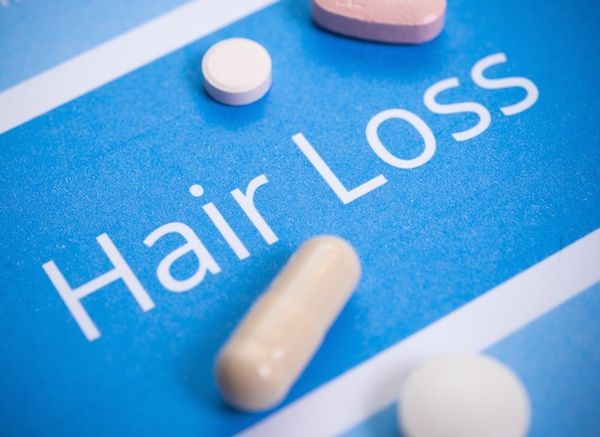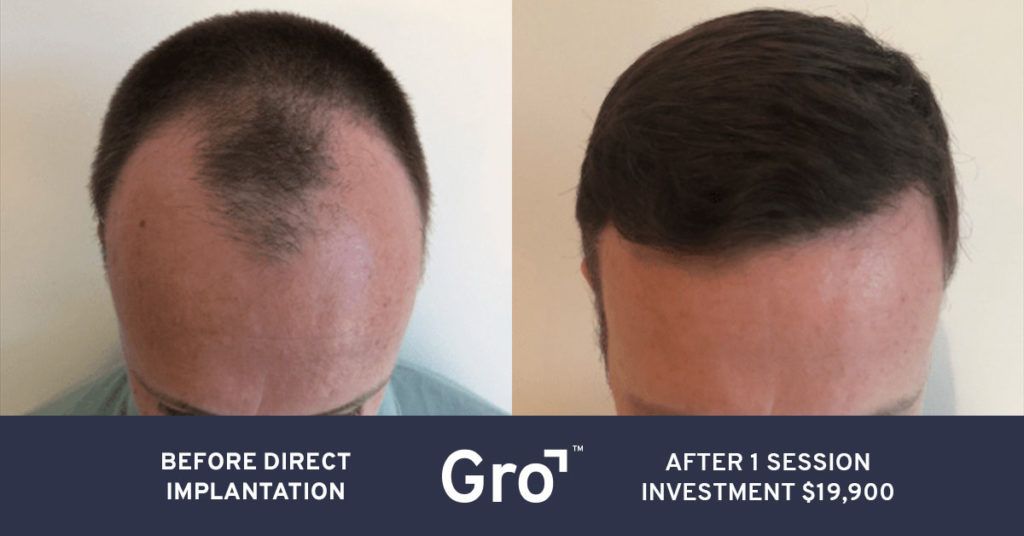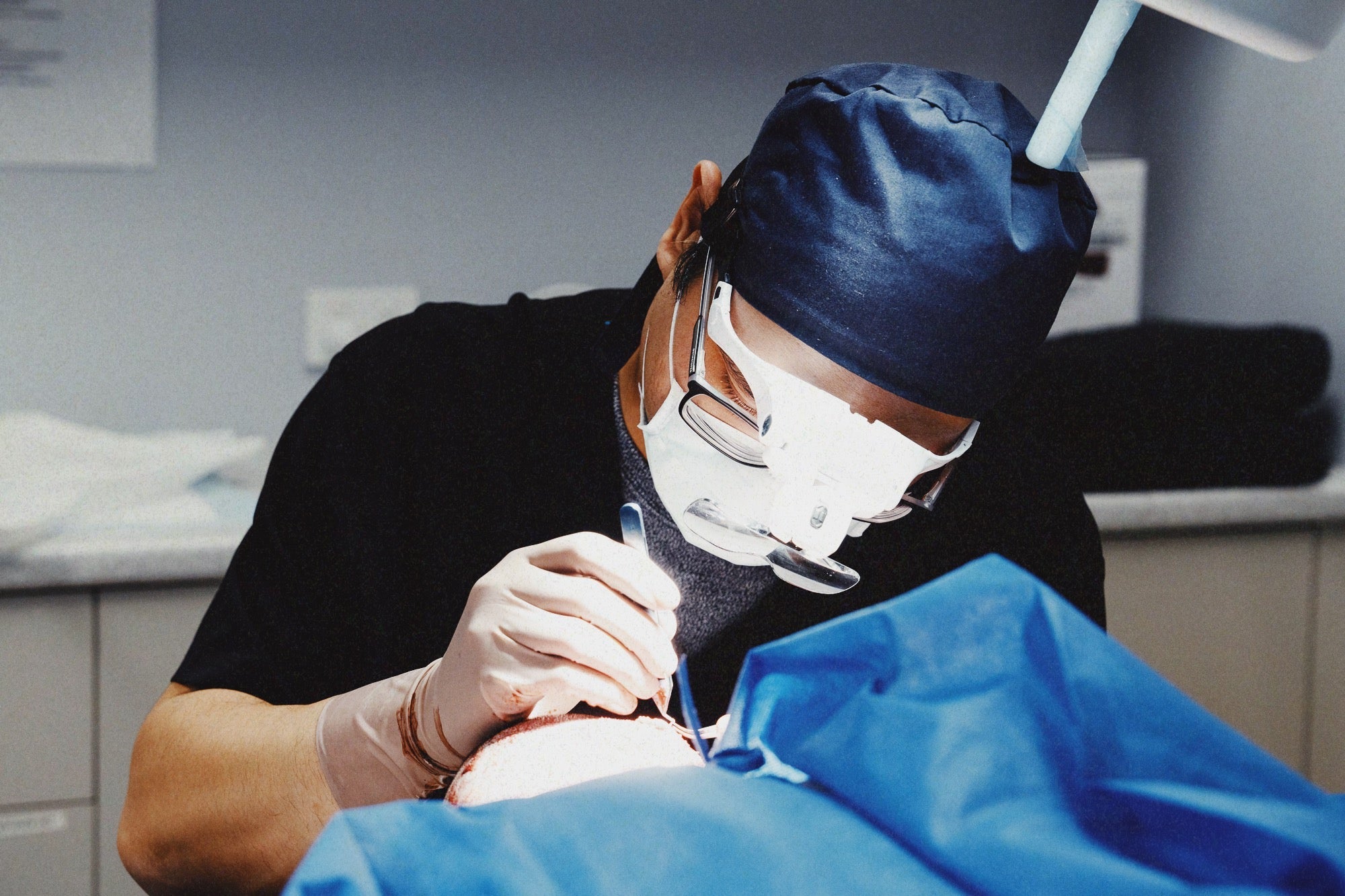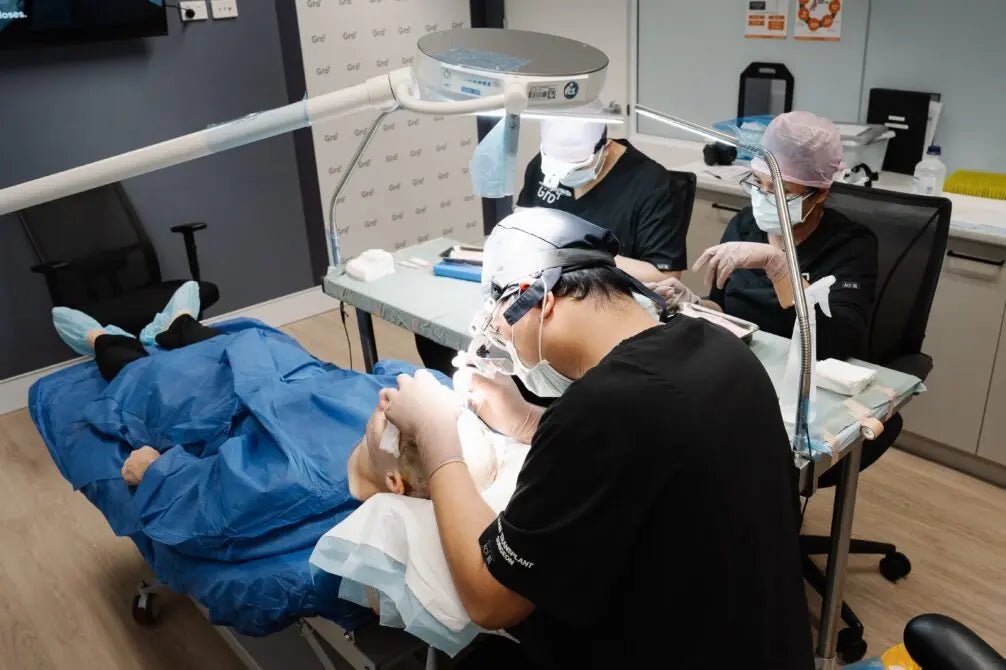The signs of ageing include wrinkles, the slowing down of cell renewal, grey hair and of course, hair loss. Loss of hair occurs when hair follicles stop hair growth, also known as alopecia. Through the normal hair growth cycle, we typically lose 50-100 hairs a day, however loss can be more excessive than this and many people turn to medication as a solution. Just like any other medication, there are side effects that need to be considered and weighed-up against other forms of treatment.
We discuss the main types of hair loss, the symptoms that you should consult a hair restoration specialist about, and the drawbacks of hair loss drugs.

Types of Hair Loss
Pattern Baldness, also known as androgenetic alopecia, is inherited or genetic baldness. Typically, androgenetic alopecia is permanent.
Traction alopecia is caused by hair being pulled. Nervous habits and certain hairstyles can be the contributors. If the pulling causes scarring then the loss is permanent.
Scarring alopecia occurs when inflammation damages and scars the hair follicle.
Other types of hair loss that are considered temporary include:
Alopecia areata is where hair loss occurs in patches on the scalp, beard, and occasionally the eyebrows.
Telogen effluvium refers to temporary loss of hair following a “shock” to the follicles, for example procedure, a serious illness, or physical or emotional stress.
Anagen effluvium is the result of loss of hair due to chemotherapy or localised hair loss from radiation therapy.
Tinea capitis is the result of a fungal infection of the scalp.
Hormonal changes or imbalances can also cause hair loss, for example, women often experience hair loss following the birth of a baby, imbalances of estrogen or androgens cause hair to fall and an over-active or under-active thyroid gland may also cause hair loss.
Symptoms to Consult A Hair Restoration About
If you experience any of the following symptoms, you should consult a hair restoration expert who can correctly diagnose your hair loss. Symptoms include:
- Loss of hair in an atypical pattern
- Early or rapid loss of hair
- Pain or itching scalp
- Scalp is red or scaly
- Excess facial hair, acne or menstrual irregularities
- Women with male pattern baldness
- Bald or patchy spots in hair, beard or eyebrows
- Hair loss following the start of new medication
Medication for Hair Loss
Treatment for loss of hair due to disease or inflammation typically involves drugs to reduce inflammation or suppress the immune system. If you have been prescribed new medication and suspect it may be causing the loss, then consult your doctor as pausing or changing medication may be considered.
There are two medications, Minoxidil and Finasteride, that approved by the Food and Drug Administration (FDA) for the treatment of hair loss.
Minoxidil is suitable for both men and women that can be purchased over-the-counter. It is a foam or liquid that you rub into your scalp twice a day to grow hair and to prevent further hair loss. Some people experience a slower rate of loss, hair regrowth or both. It takes approximately 4 months to see results and continuous application is the only way to maintain benefits. Side effects are possible, including unwanted hair growth on the adjacent skin of the face and hands, scalp irritation and rapid heart rate.
Finasteride is a prescription drug (a daily pill) only available to men. Results can include new hair growth and slowing of hair loss, however it must be taken ongoing to maintain the results. Side effects are rare but can include increased risk of prostate cancer and diminished sex drive and function.
Gro Micro-transplant Technique
The most delicate hair transplant method, Gro Micro FUE Technique, offers a permanent solution to hair loss, with no need for ongoing medications. The procedure is performed only by certified Doctors who have undergone stringent training. There are no scalpels and no stitches, meaning no visible scarring. The procedure is comfortable and offers a short recovery time. You can see from the before and after pictures below, the dramatic change it has had on these two patients. Many patients also comment on their increased confidence and self-esteem following their hair transplant.


Click here to see more hair transplant before and after photos and videos.
Take Action
If you suffer from hair loss, answer these 3 questions to discover the best treatment option for you.
For more information, you can visit on of our clinics in Sydney, Brisbane or Melbourne, or Gold Coast or call 1300 787 563.
To book an appointment for your diagnosis, simply click on one of the buttons below to book a consultation online now or ask a question. Alternatively, you can call Gro on 1300 787 563.
Related article: How Much Does A Hair Transplant Cost?












